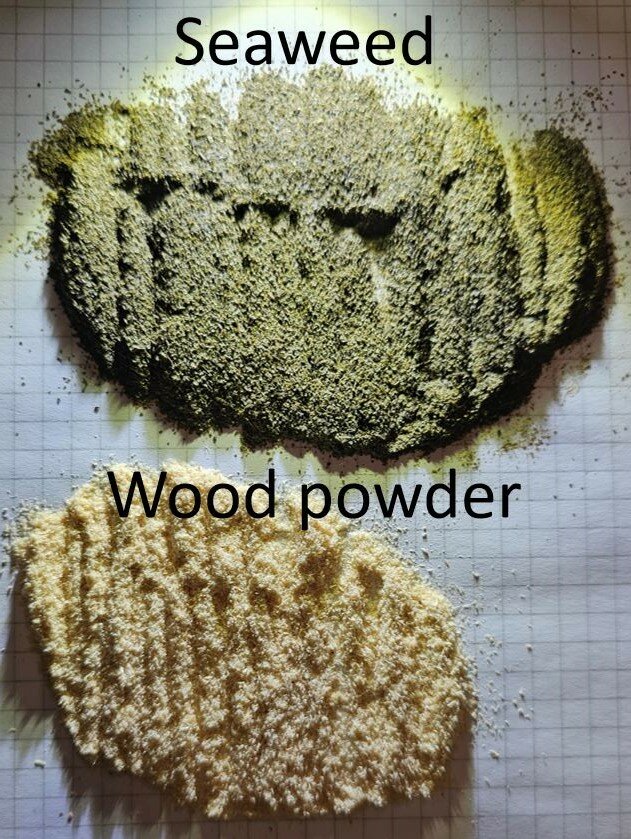Seaweed has the ability to grow rapidly, exceeding many terrestrial plants in terms of speed and biomass production:
- Seaweed has a short growth cycle, continuous growth and harvesting, minimal resource requirements, leveraging marine ecosystems, high biomass yield and beneficial carbon sequestration.

- As part of the Bio4Fuels project (SP4, WP4.1), locally harvested seaweed was dried and milled, to be made suitable as Entrained Flow gasification feedstock.
- The table below shows the properties of such a feedstock along with the analyses of the remaining biochar. The values for nitrogen and silicon remains to be verified:
We can control the Carbon Conversion (CC %), the Cold Gas Efficiencies (CGE %) and tune the H2/CO ratio, by blending SW with WP, optimizing the feedstock throughput and by increasing reactor pressure, reactor temperature and residence time. The H2/CO ratio, the CC and CGE, can further be fine-tuned by balancing the amount of gasification agents, here oxygen and/or steam.
Small amounts of SW (10-30 Wt. %) seems to enhance the biomass conversion, due to the contents of alkali metals and alkaline-earth metals in the SW (especially potassium (K)), which is an effective catalyst in steam gasification.
At a S/B ratio of 1.5, 10 Wt.% SW and a low λ, 100 % of the carbon is converted with 96 % CGE producing a syngas high in H2 and CO, and low in CO2 (46, 21 and 27 vol%, respectively).
Acknowledgment:
In addition to Bio4Fuels, we gratefully acknowledge the financial support from the BioSynGas project (319723) and the NCS C+ project (328715), partly funded by the Research Council of Norway.
